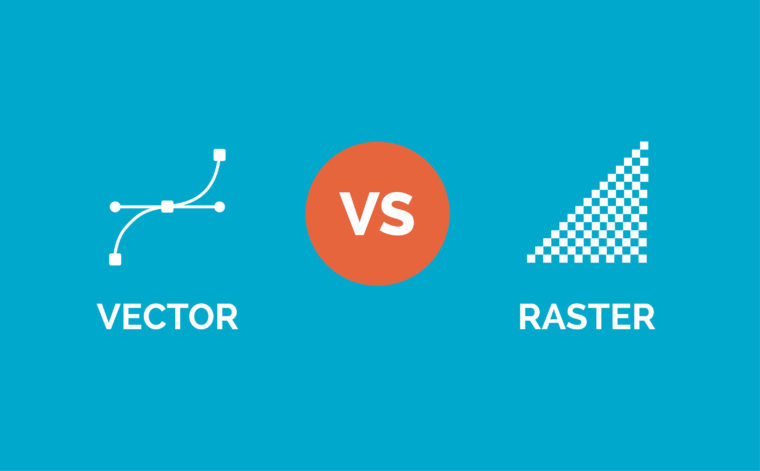You’ve seen it before. “Fuzzy” looking edges, logos that have been distorted and stretched in a Word document or PowerPoint, blurry images. These are telltale signs of a problem we encounter often . . . vector vs. raster confusion. As an art director and designer, one of the most common problems that I run into when working with other people’s files (especially logos) is that the files are not optimized for their specific use. And, yes, it can be confusing! So we wanted to use this blog post as an opportunity to help educate readers on the differences between the most used file formats and when to use them. Using the right type of image file, you can make sure your audience views crisp, clean and beautiful looking materials.
There are essentially two different types of images used by graphic design programs: vector images and raster images (also sometimes called “bitmap” images).
Vector Images
A vector image is defined by math. The more points and lines there are, the more complex the shapes that are rendered. Any of the lines and curves in a vector image can be assigned a color, stroke or thickness which turns the shapes into art. Because vector images are mathematical, they can easily be changed or resized without loss of quality. Your computer automatically reads the mathematical formula and simply adjusts the image to render a new illustration at the desired size.
Raster Images
A raster image is made up of thousands and thousands of pixels, which are essentially itty-bitty little squares of color, and when you put enough of them together you get a full photographic image. The more pixels there are in an image, the more accurate to the original it is – and the more detail can be rendered. Because every dot can be a different color, one can allow for any kind of color change. Also, the more pixels in an image, the higher the resolution.
Vector vs. Raster Files
Vector files are typically much smaller than raster images, since they only have to process a handful of points and lines, as opposed to potentially millions of pixels with a raster file. However, because of this precision, vector files must be produced with (and can often only be viewed by) vector-based software, such as Adobe Illustrator.
While smaller in size, vector images can be very complex, and they do have some drawbacks:
- Vector graphics and software are not meant to handle photographic imagery or other images with heavy effects (i.e. drop shadows, transparencies, etc.)
- Vector graphics are generally filled with a solid color and/or minimal gradients, and can’t display the huge variety of color depth of a raster image.
Raster based images are usually created with “photo or paint” software programs such as Adobe Photoshop and are great for rendering detailed, full-color images like photographs. They, too, have their drawbacks:
- Raster images are usually large file sizes. When you take into account each individual pixel used to render a photograph, your file size can get really big, really fast.
- Rasters do not resize well – at all. You can size a large file down fairly easily, but you cannot do the opposite. They become blurry, distorted and pixelated when enlarged. This is because when you transform a raster image, you are stretching the pixels themselves and the computer you are using to create the image is essentially having to fill in the missing image data based on the surrounding pixels. This is how logos that are saved as jpegs can get distorted, stretched and inaccurately displayed. [And this is also why photos that are optimized for online viewing (i.e. 72 dpi) do not render well when printed (i.e. often 300 dpi is needed), but that’s another blog post altogether!]
When to Use Which Image?
Vector graphics are great for:
- Logo design. If you build your logos in Photoshop as raster images, you will constantly run into production issues – and that isn’t a problem you want when trying to convince your clients how professional you are.
- Any time you need to make a graphic that will eventually have to scale.
Raster images are best for:
- Designs where photographic images are required.
- When you want to add an effect to an image such as a blur, texture, gradients or other image manipulation.
File Extensions
Typically you can distinguish between vector and raster formats by looking closely at the edges of graphic elements like text and logos. A vector image will always appear smooth no matter how large you make it or how close you zoom in, while with a raster image you will be able to see the square outlines of each pixel. File extensions can also help suggest which category a file will fall under, although there are always exceptions to the rule.
[table id=1 /]
*Note: Any of the above file types can be exported to a pdf format, which can be either vector or raster or a combination of the two
Since, both raster and vector file types are blanket terms for many different file types with different functions, purposes, benefits, in my next post I will explore, in depth, the most popular file format extensions in each of these two categories. So stay tuned…

